Tarot cards have soared in popularity in recent years as a way to practice self-care, magic, divination, and personal growth. What started as a 15th-century set of Italian playing cards has evolved into an innumerably wide variety of decks and ways to use them.
Tarot cards gained a particularly widespread connotation with mysticism around the 18th and 19th centuries once Romani people began using them for fortune telling, an economic survival strategy in response to centuries of persecution across Europe. On this precedent, tarot is often regarded as a medium for peering into the future and divining precise information about events to come, though this may be a misguided approach. Rather, the cards might offer a look into the possibilities along the path ahead, presenting you with guidance on the best ways to apply yourself toward your desires and goals.
Ultimately, there is no one right or wrong way to use tarot cards: What matters most is the intuition of the person reading them. Some readers rely on a mathematical set of definitions ascribed to each card to interpret their meanings, while others favor a style that leans more heavily on imaginative powers, gut feelings, discernment, and inner voice. Many people don’t even view tarot as a means for actual prediction so much as a provider of fresh perspective on an internal struggle or decision-making process.
The information in this article is meant to serve as a general guide for your journey into the world of tarot. Read on to learn more about how to read tarot cards, interpreting the major and minor arcana, the numerology of the tarot, the difference between tarot and oracle cards, and the historical context of the tarot, including a note on the Rider-Waite deck’s original artist, Pamela Colman Smith.
Header image by petr sidorov on Unsplash.
How to Read Tarot Cards
Reading tarot cards is a medium for honing your intuition—it’s all about drawing connections between the imagery of the cards, their outlined interpretations, and the subject of the reading. While each card may deal with a certain set of keywords, topics, or themes, these are ultimately guidelines for your own ideas to fill in. Remember: Nothing is set in stone. You retain the power to make your own decisions, and impact the course of events through the actions you take.
How to Pull Cards
Photo by Nithya R on Unsplash.
There is no one right or wrong way to draw cards from your deck—it all comes down to what feels best for you. Some readers prefer to shuffle the deck and allow cards to fall out naturally; others may spread them out face-down on the surface before them and select intuitively from there.
It is not necessary to approach the cards with specific questions, though it can be helpful to anchor your reading with an intention to guide both the messages that come forth, and your interpretation of them. Some folks fancy direct, yes-or-no questions, but we favor a more fluid approach of asking open-ended questions that can offer wider insights into the situation at hand.
Tarot Card Spreads

Sometimes the easiest way to read cards is to work within the medium of a card spread: a specific arrangement of cards with each card position assigned a certain question or theme. The most common is a three-card spread, generally laid out horizontally with one card each standing in to signify the past, present, and future. A variation on the three-card spread pulls one card each for body, mind, and spirit. You can also add a fourth card to each of these spreads for advice. The possibilities here are quite literally endless!
Another common spread is the Celtic Cross, which works with ten different cards to read quite in depth on a certain topic or situation. If you’re starting out with a new deck, you might like to try an interview spread to begin building a relationship with the cards and to get to know them a little better. There are hundreds of spreads you can use for your readings, so we recommend digging around for the ones that suit you best.
If you observe any holidays on the Wheel of the Year, we’ve compiled a list of seasonally-aligned questions you can take to your cards for personal insights around each of the eight sabbats.
How to Read Reversed Cards

There are many different ways to interpret a reversed card, though it doesn’t always impact the reading! Some readers choose to disregard the state of reversal completely and interpret solely based on the wider themes the card presents. For others, a reversal turns the meaning of the card on its head.
If a card appears reversed, it can signify a blockage or challenge with the card’s theme—a goal or idea you desire to reach yet struggle to achieve, or some aspect of yourself you struggle to connect with. A reversal can also point to the energy of the card being internalized or at play within the inner world. It might also speak to a challenge you have faced or a chapter in your life that has finished. Sometimes a reversal can even have aesthetic purposes, revealing an idea in the art of the card that may have otherwise remained hidden.
The function of the reversal is entirely dependent on the context of your reading and is subject to your own creative ideas. Sit with the card when it appears reversed and find the interpretation that feels right to you.
The Major Arcana, Explained
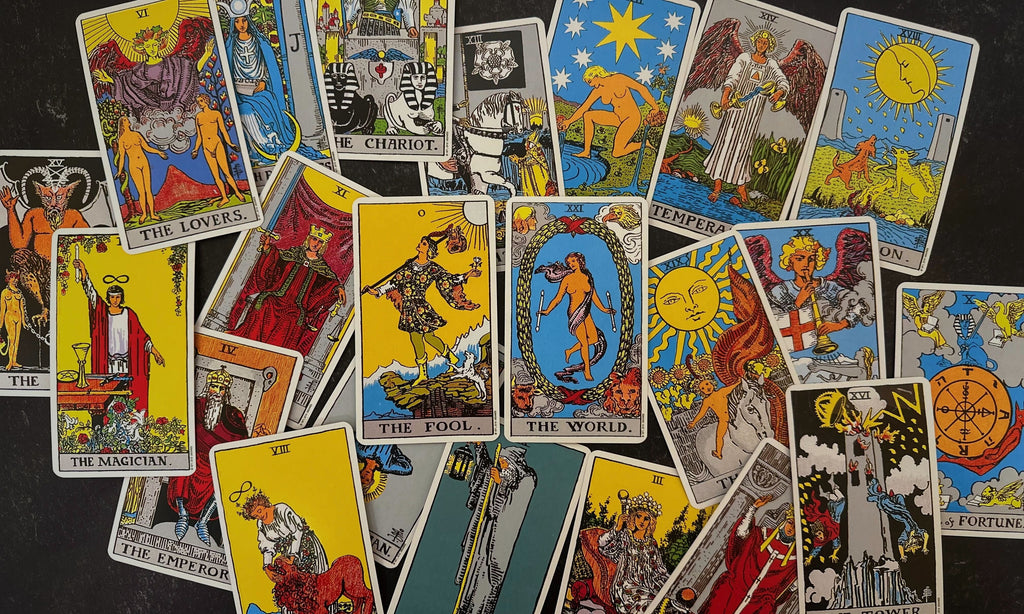
The major arcana in tarot consists of 22 archetypal cards that tend to represent major events, lessons, or themes in one’s life. The cards in this section of the tarot follow a “hero’s journey” arc, often referred to as the Fool’s Journey. At the beginning, assigned the value of 0, we are presented with our main character, the Fool: A carefree, child-like figure with a world of possibilities open to them. As events progress and choices are made, the Fool proceeds through the trials and tribulations of life, meeting new teachers and growing through each archetype until they reach a final point of culmination (the World). Then, the cycle may begin anew.
This is lovely to consider as it reminds us of our own transformative nature, and allows us to reflect on which era of life we may find ourselves in. It’s important to remember, too, that while the cards may present a linear path, our own journeys through these archetypes may not follow any order.
If you’re curious to go a little more in depth on the Fool’s Journey, we recommend checking out Noel Eastwood’s The Fool’s Journey through the Major Arcana, a short novelization of the major arcana.
Note: The arrangement of the cards below follows the Rider-Waite-Smith school of Tarot. More on this in the historical context section of this guide.
0. The Fool

Key words: beginnings, possibilities, innocence, spontaneity, optimism, the unknown
The Fool stands at the threshold of everything. This carefree character faces the unknown unmolded by the lessons of life experience. Anything can happen, and you have much to learn. Listen to your instincts and let the teachers around you guide your journey forth.
1. The Magician

Key words: initiation, power, resourcefulness, action, inspiration, manifestation
With access to every tool in the tarot, the Magician embodies creative power. By focusing your mind into the creative process, you too can learn to draw forth your inner visions and bring them to life. Trust yourself. Experiment. Let your imagination flow through you.
2. The High Priestess
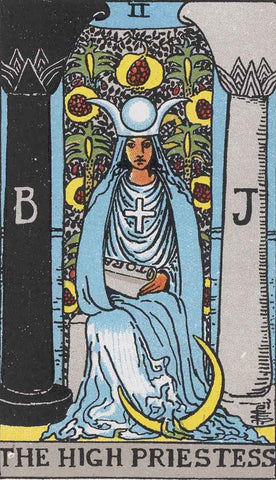
Key words: intuition, stillness, the subconscious, the inner voice
The High Priestess awaits you in darkness. This silent teacher is the power of your unconscious mind, elusive, wise, and challenging. It is time to travel deeper into yourself. Meet yourself in stillness, and learn to know the sound of your inner voice.
3. The Empress

Key words: femininity, fertility, abundance, compassion, nurturing, nature
The Empress is the mother figure of the tarot. Poised in the garden of Venus, she welcomes you into her rich and nourishing presence. It is safe here to be a child again. Relax, play, and enjoy the abundance of nature. The seeds of your personal power are blooming.
4. The Emperor
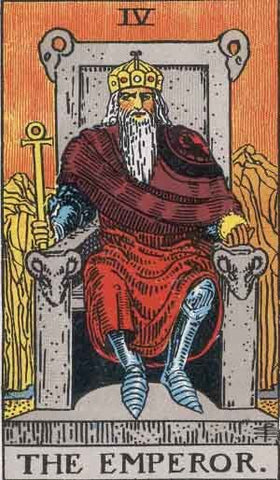
Key words: masculinity, authority, structure, strategy, provider, control
The Emperor is the father figure of the tarot. He is builder and protector, director and master of self. The Emperor creates order. It is time to focus on setting effective rules and systems in place for your ship to run smoothly. Structure is what allows creative ideas to take form.
5. The Hierophant
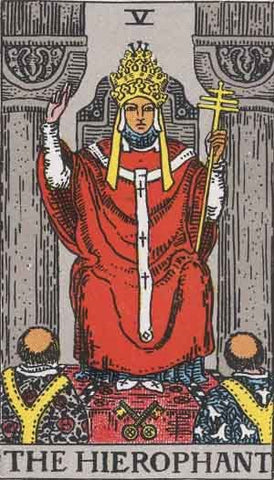
Key words: spiritual knowledge, traditions, conformity, teacher, sharing wisdom
The Hierophant is a spiritual teacher rich with traditions from the past. With self-discipline and a dedicated practice, you too can develop an expansive knowledge of the world. Balance your studies with direct experience. Know when to follow the rules, and when to break them.
6. The Lovers
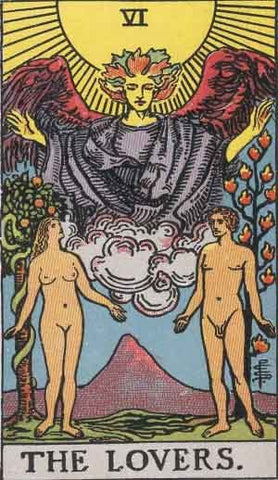
Key words: choices, balance, harmony, partnerships, duality
The Lovers embody partnership and romantic, sexual, or spiritual union—though this pair also represent an important moment of decision. It is time to establish your own values and beliefs. Fulfillment comes from being true to yourself.
7. The Chariot
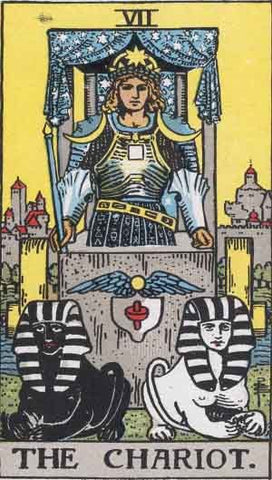
Key words: momentum, direction, inner trust, determination, action, instincts
The Chariot races in to bring you swiftly forward on your path. A decision has been made, and there is no time for self-doubt: You must now take action with confidence. The path ahead may be unclear, but your instincts are your guide. Trust you move on a path toward victory.
8. Strength
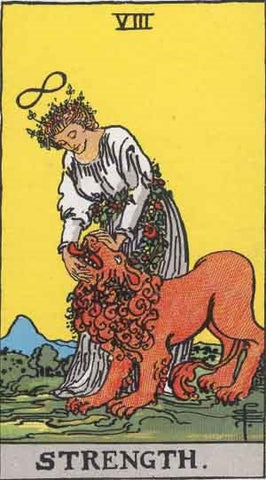
Key words: bravery, leadership, integrity, compassion, internal collaboration
Strength defines an ability to harmonize all parts of yourself with compassion and patience. Kindness and tolerance are needed to command the reins of your chariot. Look inward to find your courage. Internal collaboration is key for true strength.
9. The Hermit
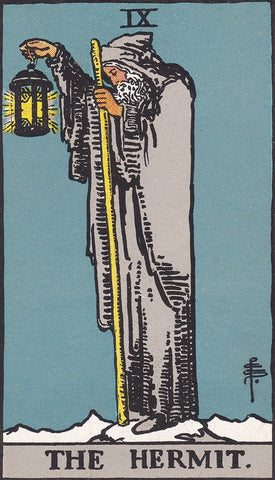
Key words: solitude, introspection, inner wisdom, contemplation, learning
Introspective and wise, the Hermit welcomes you into a place of solitude. It is time to retreat and reflect. Prioritize spaciousness, and give yourself room to let your inner worlds unfold. Wisdom has been growing within you.
10. The Wheel of Fortune
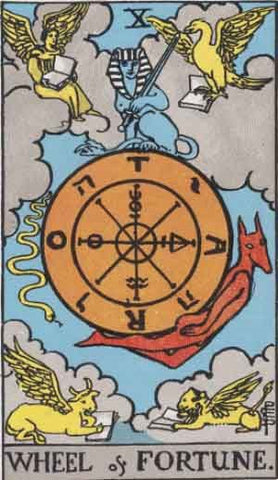
Key words: inevitable change, life cycles, luck
The Wheel of Fortune is the current of a river, strong and swift, here to move you along your course. Change is inevitable. It moves beyond our control. Yet, the Wheel of Fortune allows a momentary glimpse into the interconnectedness of all things. Relax, and let yourself be moved.
11. Justice

Key words: clarity, truth, accountability, retribution
Honest, fair, and true, Justice arises to restore balance. Sharpen your discernment and evaluate the patterns and dynamics of your life. Notice what is working for you, and what is working against you. You are your own judge and render your own justice.
12. The Hanged One

Key words: suspense, sacrifice, surrender, new perspectives
The Hanged One is suspended upside down to gaze at the world from a different perspective. Though you may have been driven here by confusion and pain, it is in relinquishing control and simply being present with your experiences that new connections emerge. Vulnerability is the foundation of growth.
13. Death

Key words: transformation, endings, evolution
Death arrives suddenly bringing irreversible change. It is certain that something has ended and the path laid out ahead seems mysterious, uncomfortable, and dark. However, this fearsome character is not unkind. Every seed begins in darkness. A transition is underway, and a new era is beginning.
14. Temperance

Key words: patience, moderation, health, balancing opposites, finding meaning
Steady, intentional, and calm, Temperance masterfully balances opposites and contradictions. This graceful character reminds you that moderation is needed in order to find harmony in your life. Be patient, look closely, and focus on feeding your center.
15. The Devil
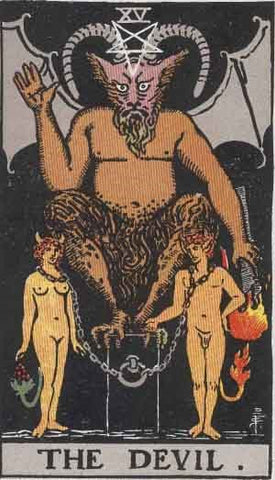
Key words: restriction, attachment, temptation, manipulation, obsession, illusions, despair
Cloaked in irresistible temptation, the Devil is a cage that seems to trap you. Obsessed with a pursuit of the Devil’s promised splendors, you have lost your sense of power and autonomy. Your unhappiness indicates this way of life is not sustainable. It is time to set yourself free.
16. The Tower
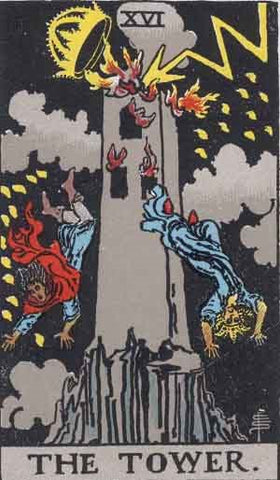
Key words: sudden change, upheaval, painful endings, loss, freedom, revelations
Boom! Crash! The Tower you have built brick by painstaking brick is struck by a bolt of lightning and shatters to the ground. Your plans have been undone by a force beyond your control. Rest and recuperate. You may encounter fresh ideas and choose to build anew; you may also encounter better opportunities in your freedom. Whatever you decide, you now have a deeper knowledge of what can destruct your work.
17. The Star

Key words: hope, renewal, healing, vulnerability, new ideas, connection with nature, being yourself
The Star is a welcomed sight after the events of the Tower, gleaming with inspiration and hope. It is safe to be truly vulnerable. The Star’s gentle presence offers healing to your deepest wounds. Find their wisdom in the water, earth, and sky as a sense of wonder and peace blooms within you again.
18. The Moon
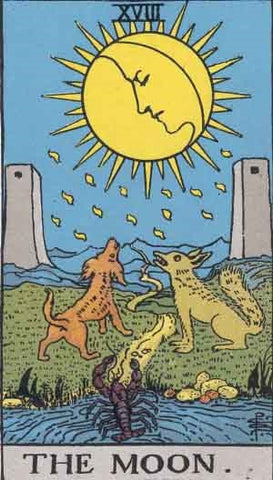
Key words: darkness, uncertainty, bewilderment, fears, illusions, intuition
The Moon reigns over a night so endlessly dark you lose any sense of the coming dawn. Her light is deceptive, drawing forth visions of subconscious fears. You are interacting with your deeper self. Let your inner voice be your guide.
19. The Sun
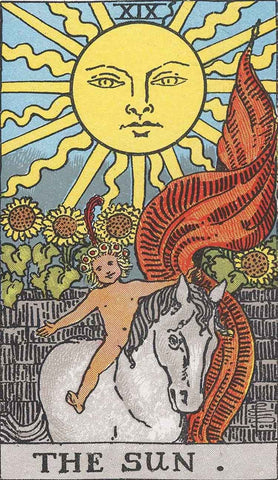
Key words: celebration, joy, success, vitality, recognition
Rejoice! The night recedes at last with the rising of the Sun. This awe-striking light dispels confusion and fear, shining over your accomplishments and success. Celebrate that you are here, robust and alive! Your hard work has earned recognition. Refresh yourself and get excited for what’s to come.
20. Judgment
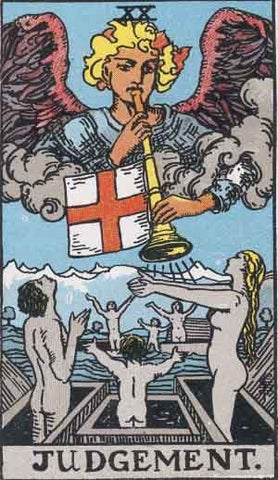
Key words: reflection, evaluation, clarity, forgiveness, inner calling, awakening
Judgment is a moment of clarity. You have progressed far from where you began and have learned a great deal about yourself and the world. You can see your inner self clearly, and your deeper aspirations surface. You no longer need to hesitate: Your course of action is revealed.
21. The World

Key words: completion, fulfillment, perseverance, integration, certainty, contentment, travel
It is time to take your place in the World. You are being called to serve your community by sharing your talents, knowledge, wisdom, and gifts. Living true to yourself, your presence is unique and revered. One journey may have ended, yet another is soon to begin as the cycle of self-discovery is renewed.
The Minor Arcana, Explained
The minor arcana encompasses the four suits of the tarot: wands (replaced in some decks by torches or rods), cups, swords, and pentacles (replaced in some decks by coins or discs). Each suit is aligned to a different element (fire, water, air, and earth) and depicts a journey of growth through a certain realm of life from start to finish. Cards from the minor arcana tend to represent everyday events, lessons, or themes in one’s life.
The Suit of Wands
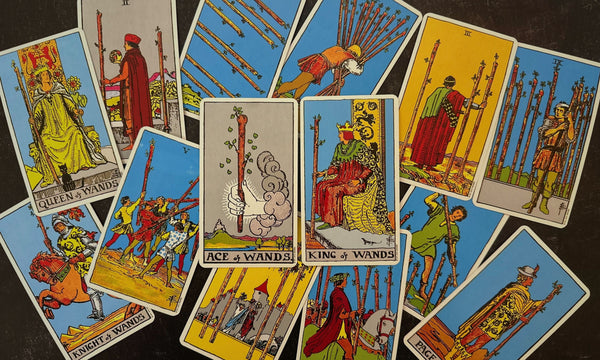
Key words: vitality, transformation, inner power
The suit of wands aligns to the element of fire. These cards represent your energy, willpower, and career. They speak on matters of the spirit and your creative pursuits.
The Suit of Cups

Key words: sensitivity, spirituality, self-worth
The suit of cups aligns to the element of water. These cards represent your emotions, intuition, and relationships. They speak on matters of the heart and your (often unconscious) dreams.
The Suit of Swords

Key words: communication, strategy, logic
The suit of swords aligns to the element of air. These cards represent your thoughts, ideas, and decisions. They speak on matters of the mind and your intellect.
The Suit of Pentacles
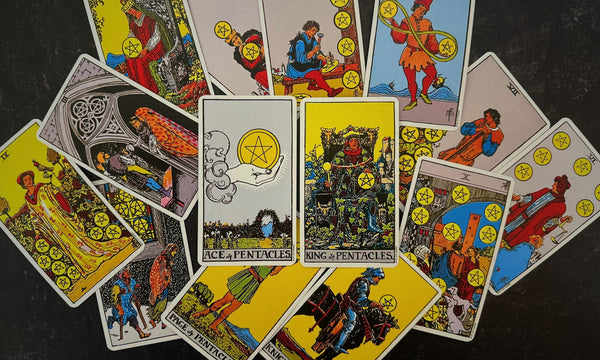
Key words: production, craftsmanship, resources
The suit of pentacles aligns to the element of earth. These cards represent your finances, health, and home. They speak on matters of the body and the material world.
The Numerology of the Tarot, Explained
Each card in the minor arcana follows the numerological structure outlined below, with each number corresponding to a different set of themes. To read a card from the minor arcana, simply match the themes of the given suit to those of the given number. When you apply the context of your intention for drawing the card, paired with your own intuition or imagination, the meaning of the card will be revealed.
1: Initiation, action, new beginning, opportunity, individuality, inspiration
2: Creation, duality, choices, balance, coming together, relationships, building
3: Birth, expansion, collaboration, creativity, taking action, cross-pollination
4: Foundations, structure, stability, balance, building
5: Transformation, conflict, challenge, disorder, adaptation, change
6: Prosperity, restoration, surrender, flow, balance, harmony, motion, creativity
7: Analysis, contemplation, interconnectedness, presence, patience, dual truths, realignment
8: Strength, abundance, willpower, belief, attainment, drive, realization, cycles, transformation
9: Persistence, spiritual knowledge, self-exploration, shadows, expansion
10: Legacy, achievement, appreciation, completion, delegation, family, renewal
Page: Youth, beginnings, exploration, playful, new path, learning, fresh, unbiased
Knight: Adolescence, intermediacy, erratic shifts, proactive yet unbalanced
Queen: Inward maturity, embodiment, leading by example, radiance, intentions, beliefs
King: Outward maturity, projection, leading through action, setting external guidelines
What are Oracle Cards?
Oracle cards are used for the exact same purposes as tarot cards, yet they are distinctly different. Every tarot deck follows the same, specific structures (depending on which school of tarot it follows), but oracle cards break free from these constraints and contain structures and topics of the creator’s own design.
For example, Kim Krans’ Animal Spirit Deck is divided into five elemental suits with each card depicting a different animal associated with a certain set of meanings. By contrast, Seattle artist Henry’s Radical Abundance cards follow no specific order and come without a guidebook—they simply are as they are, ready to be interpreted by their reader.
Between tarot and oracle cards, there is no one better than the other. They both function effectively and have the power to offer insights and guidance as needed. It all comes down to your personal preference. You might even enjoy using tarot and oracle cards together in a reading; you may find each card resounds more deeply in the presence of the other.
Historical Context of the Tarot

Photos from Beinecke Rare Book & Manuscript Library, Yale University, New Haven, Connecticut (ITA 109).
We begin seeing tarot decks in 1430s Italy in the form of playing cards, versions of which can also be found in Germany and France, with the latter eventually producing the Tarot de Marseilles. A few different schools of tarot cards have evolved throughout the years, from the classic Rider-Waite-Smith version to the Thoth and Lenormand versions.
As the playing cards spread across Europe, they were adopted by Romani people and used as a form of fortune-telling, quickly becoming central to their economic survival. The cards were primarily used by women selling their services to wealthy white Europeans, yet it was hardly an easy path, as Romani people have spent centuries in Europe being oppressed, ridiculed, persecuted, and shunned. PhD student Clara Isabel Girón Pacheco writes, “Tarot was something practiced outside ‘decent’ European society and culture. Unequal gender, racial, and class power relations are thus innate to tarot cards, however this is often overlooked, and even, romanticized.” While tarot cards were not invented by Romani people, their use of the cards is what ultimately created their mystical allure, forming “part of the trajectory of tarot [that] must not be forgotten or dismissed.”
As stigma surrounding occultism began subsiding around the turn of the 20th century, interest in the mystical arts rose in popularity. It was at this time that the most popular tarot deck to date was commissioned. The original art of the classic Rider-Waite tarot deck was drawn by Pamela Colman Smith, an artist and occultist commissioned for the job by fellow occultist Arthur Edward Waite. Her artwork is fabulous, intuitive, and rich with symbolic meaning—Waite himself described her as “a most imaginative and abnormally psychic artist.”
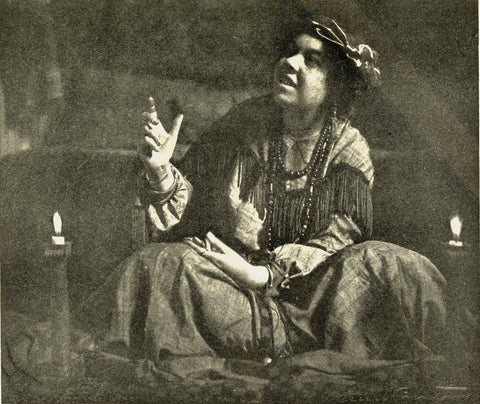
Photograph of Pamela Colman Smith reciting a folktale.
However, upon publication in 1909 by the Rider Company, Smith was erased from her work. Rider reprinted loudly-colored copies of her initially softer images and never once included her name on the box. She was also very poorly compensated for the enormous body of work she produced, observing in her personal writings that it was “a big job for very little cash!”
Artist, writer, and ancient historian Lakshmi Ramgopal writes, “These erasures accompany recurrent questions about Colman Smith’s race and sexual orientation. The writings of her contemporaries and what little we know of her life suggest she was biracial and maintained romantic relationships with other women. As a result, she has become an important figure in the modern tarot community’s discussions about how white supremacy is practiced in its circles.”
Many are pushing now to rename the Rider-Waite deck as the Rider-Waite-Smith deck, or simply the Waite-Smith deck. To learn more about the brilliant Pamela Colman Smith, we recommend reading the article quoted above, perusing Stuart Kaplan’s Pamela Colman Smith: The Untold Story for a rich account of her life beyond the tarot, and looking into her original artwork for the cards.
* * *
Do you have a favorite tarot deck, spread, or differing interpretations of the cards? Leave us a comment below—we’d love to hear from you!

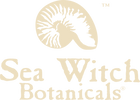
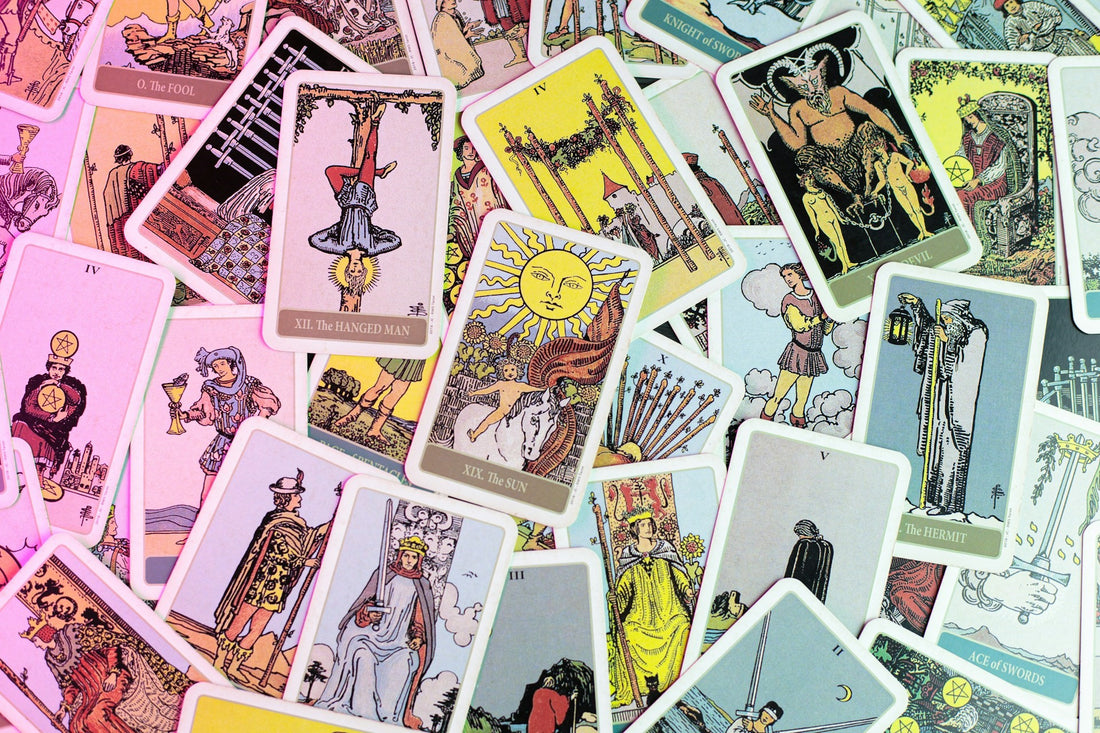
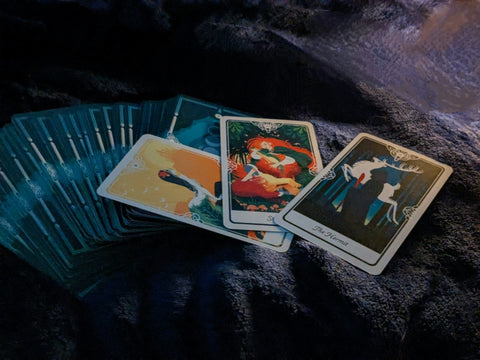

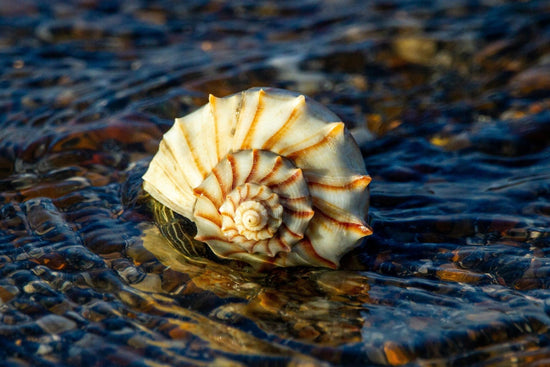
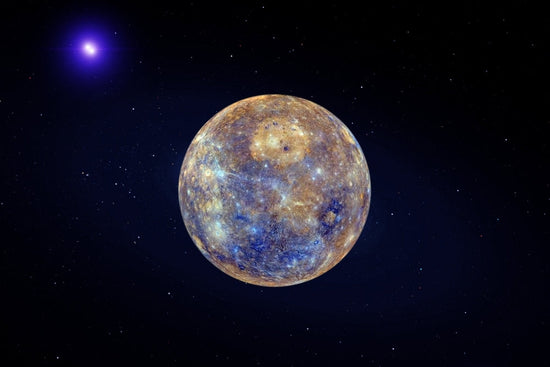
1 comment
I inherited the Aleister Crowley THOTH Tarot deck back in the early 70’s. It says the cards are based upon the original paintings by Lady Frieda Harris, who also has two essays in the box. This blog post is interesting. It has encouraged me to research more about what I have. Thank you for sharing your knowledge.